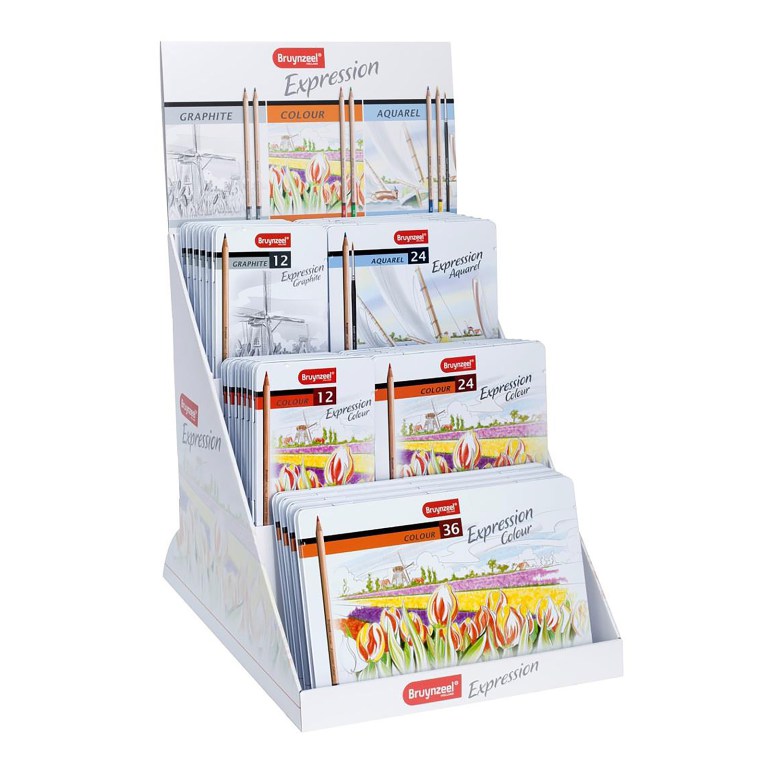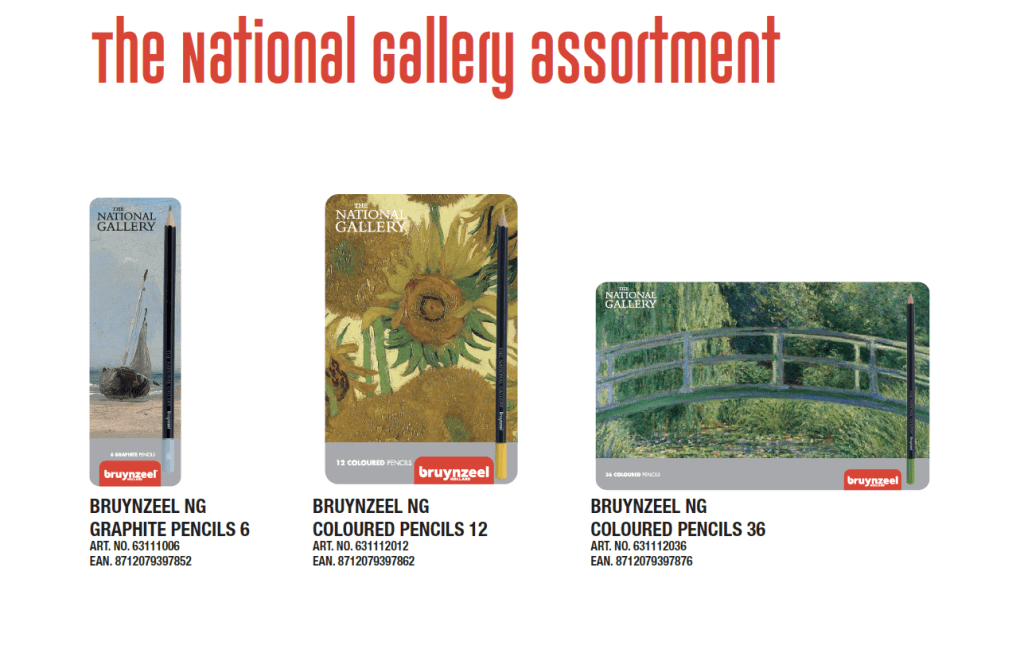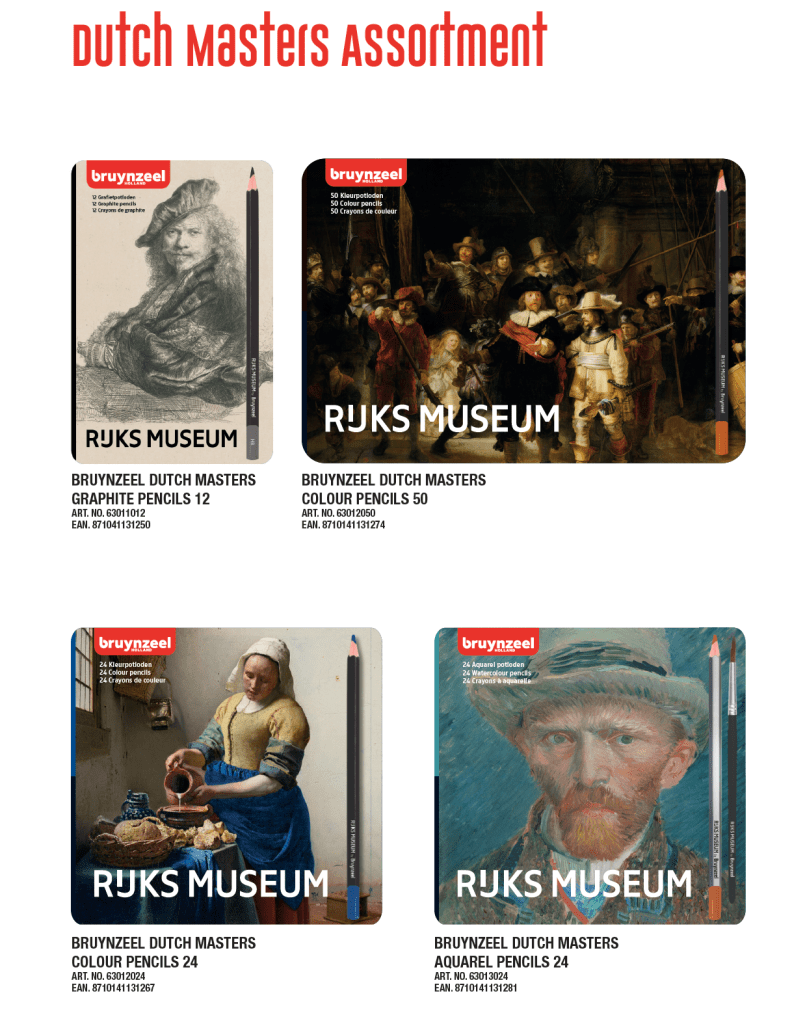Bruynzeel Pencils
The Origins of Colored Pencils
Ancient pigmented wax-based colors date back more than 10,000 years. In AD 59, “Pliny the Elder” recorded Romans using colored wax based “Creta”, the Latin word for clay. The word’s descendent, “Crayon”, French for pencil, dates back to the 17th century where the oldest known wood covered pencil was discovered. The first manufactured pencils were created in 1795.
A Brief History of the Bruynzeel Brand
Bruynzeel was founded in 1897 as Stoomtimmerfabriek in Rotterdam by Cornelis Bruynzeel Sr. producing wooden floorboards, wood shaving products, and school desks. In 1948 the company was asked by the Dutch government to supply pencils, which evolved into the production of other writing, hobby and office supplies. Since 1948, the Dutch company Bruynzeel has been supplying top quality writing, hobby, and artist products for the home, school and studio. With its wide product range, Bruynzeel provides an answer to every functional or creative aspiration for expressing your imagination.
Bruynzeel Today
In 2016, Bruynzeel joined the Royal Talens family of products, and as a result, is experiencing a resurgence in its popularity worldwide.
Bruynzeel manufactures several lines of pencils for every type of artistic venture.
Bruynzeel Expression are the perfect pencils for creative people and hobbyists. A full range of vivid colors adds brilliance to your experience whether its coloring mandalas or sketching in your journal.
For the more discerning artist, designer or illustrator who knows precisely what sort of equipment you want, Bruynzeel has the very best. Our complete Design collection with graphite, color, watercolor and pastel pencils is tailored precisely to your needs.
With Bruynzeel Design, you will be extremely happy with the buttery soft core based on a liquid wax formula which eliminates wax bloom. The light cedar casings from sustainably managed forests are very attractive and functional as well as being environmentally responsible. The core is glued securely to the casing, ensuring that it stays in the pencil while sharpening. These pencils have outstanding color transfer producing “a lot” of color without much pressure reducing hand strain and prolonging the life of the pencil. The colors are completely archival with good to excellent lightfast ratings. The CPSA tested proprietary pigment mixtures are of the highest degree and ensure superior tinting strength and exhibit excellent burnishing and layering qualities. With a 3.7mm core diameter, you will experience an ease of control well suited for both large areas and detail work. The cleanly designed case with pull out drawers includes a protective lining for each pencil. Also included in every box is a full color chart.
The Bruynzeel Expression range comes in tins of 6, 12, 24, 32 in the format of watercolor, graphite and colored pencil.
The Bruynzeel Design range comes in 50 colors with 12, 24 and 48 color sets as well as open stock and you can find these pencils in watercolor, pastel, graphite and colored pencil formats. The line will be expanding to 96 colors in 2019.
Bruynzeel also offers a range of general collectable and gift pencil sets which are a good quality at a reasonable price and feature a museum collection range as well with inspiration drawn from the Rijksmuseum and the National Gallery of London.
Whether you’re off to school, exploring your creative side, or looking for professional artist tools, we encourage you to rediscover Bruynzeel and the exceptional experience it adds to your creative endeavors.
Tips for Making the Most of your Color Pencil Experience
· Try using a blender (available in pencil and marker) for burnishing
· Experiment with solvents for blending color (rubbing alcohol, odorless spirits, baby oil) always test first!
· Dip blending stumps or tortillions in a solvent and use as a blender (or a Q-Tip)
· Correct mistakes with Uhu Sticky Tac (scotch tape works too)
· Use Canned Air Spray to remove color pencil dust instead of a brush to eliminate smearing
· For fine detail make an impression on the paper first than use light pressure over it to define the line
· Erasers you can use include color pencil erasers (yellow in color), kneaded erasers and vinyl erasers
· Use Erasing Shields to isolate the areas you want to erase
· Use a sheet of Mylar to rest your hand on as a shield to protect your work from smearing while drawing
· In addition to pencils sharpeners, use sandpaper pointers for less waste
· Use color juxtaposition to create contrast and depth (i.e. complementary colors) as opposed to black or white
· Experiment with different drawing surfaces for effects
· Build up to heavy applications, it’s easier to correct mistakes that way
· Using a dry brush to blend areas can brighten the surface





